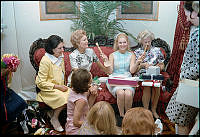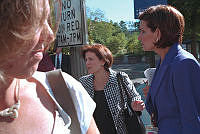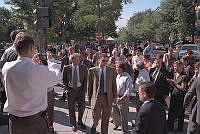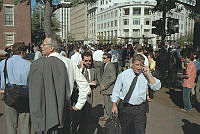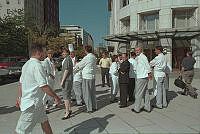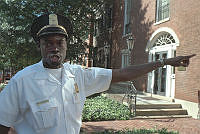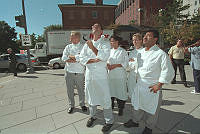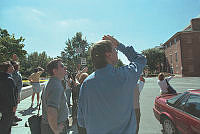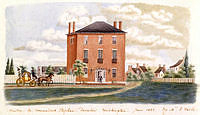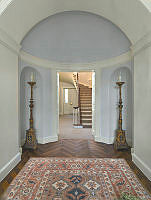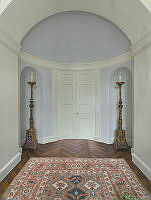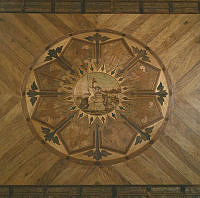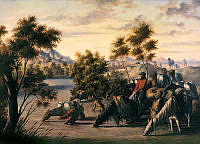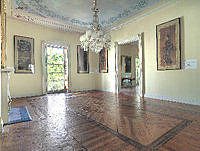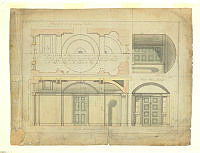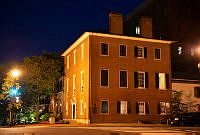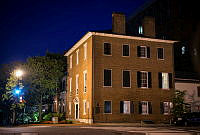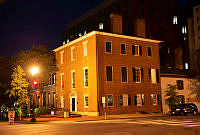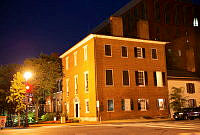Lafayette Square
Copyright © White House Historical Association. All rights reserved under international copyright conventions. No part of this article may be reproduced or utilized in any form or by any means, electronic or mechanical, including photocopying, recording, or by any information storage and retrieval system, without permission in writing from the publisher. Requests for reprint permissions should be addressed to books@whha.org
The 18th century uses of Lafayette Square included a family graveyard, an apple orchard, a racetrack, and a market. The federal government eventually purchased the land as part of the White House grounds and workers, including numerous enslaved African Americans, camped there during its construction. To create a grand avenue in front of the White House, President Thomas Jefferson ordered Pennsylvania Avenue cut through “President’s Park” in 1803. Twenty years later, the Marquis de Lafayette toured the country and officials renamed the park in his honor.
In 1815, St. John’s Church constructed their sanctuary and in 1818, Commodore Stephen Decatur and his wife Susan began building their home, with both structures designed by B. Henry Latrobe. It was during these early years that the Square became one of the city’s most fashionable and prominent neighborhoods, its location near the White House attracting numerous residents of note, including members of the Cabinet, Congress, and the diplomatic corps.
In 1851 President Millard Fillmore commissioned landscape designer Andrew Jackson Downing to develop new plans for the city’s park spaces, including Lafayette Square. Two years later, sculptor Clark Mill added the first equestrian statue in the United States – Andrew Jackson on horseback – in the center of the Square.

An engraving of Washington in 1800. West end of capitol grounds and Pennsylvania Avenue are shown.
Architect of the Capitol Collection, Prints & Photographs Division, Library of CongressDramatic growth on Lafayette Square peaked after the Civil War and the neighborhood became home to more of Washington’s elite, including banker William Wilson Corcoran, diplomat John Hay, and historian and author Henry Adams, who expressed the enormous significance of the Square, writing that, “Beyond the Square, the country began.”
In addition to being a significant residential neighborhood, various governmental, private, and cultural entities also established their presence in buildings on the Square. From the Freedman’s Savings Bank to the Cosmos Club and from the Belasco Theater to the Treasury Building, Lafayette Square drew citizens from all walks of life well into the early 20th century.
By 1954, Decatur House was the last private residence on the Square and it took the Kennedy administration’s intervention several years later to preserve the remaining architectural character of the neighborhood. The efforts of First Lady Jacqueline Kennedy resulted in the first-ever protection of an entire neighborhood, and set the stage for the 1966 signing of the National Historic Preservation Act.
Though no longer a residential area, a stroll around Lafayette Square today still calls to mind its compelling past.














